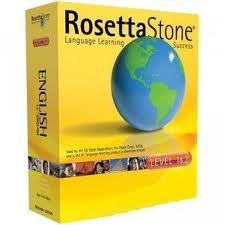ESL Students at Union Chapel

2012

15 ESL Students

COUNTRIES
1. How many different countries are represented by our students at UC this year?
Honduras
Iran
Mexico
Micronesia
Saudi Arabia
Sudan
United States
Uzbekistan
Vietnam
9
Cuba
Germany
House Lesson
Getting to Know YOU
The first group lesson for this year was to make a house for our community or village. We designed the outside of the house by thinking of our heritage using the colors in the flag of our ancestors. Next we placed our family members inside our house and then thought of as many things as possible that we like to put in our home. We then drew and labeled the items. Next we put our items in categories, learning what each category meant. Then we heard a chant about north, south, east and west several times and then wrote a paragraph with descriptions about our house and family. Last we placed them on the village bulletin board in their chosen location. When the parents came for our Specials evening, I helped them read their students clues so they could figure out which house was their child's house.
b
With the countries come various cultures-awareness of cultural biases that we may unintentionally create.
Cultural differences
This graphic from Dr. Else Hamayan shows that there is more to culture than meets the eye!

2 How many different languages are spoken by our students at UC this year?

LANGUAGES
Arabic
Chuuk
Dinka
English
Farsi
Pohnpian
Spanish
Uzbek
Vietnamese
9
Germany
a) Honor the home language and culture

Animals
Counting in their Language
Buildings
Clothing
Customs
Famous Landmarks
Food
Games
Hair
Holidays
Homes
Music
People
Schools
When I Think of My Country I Think of
b Validation, Affirmation, Building and Bridging Susi
c. The appropriate ways to correct in the conversation when English is incorrect
is to rephrase the answer the student gave you in the correct grammar.

If the child says
Go book.
Don't laugh just
Make a complete sentence and say
"Yes you may go get the book."
The child will hear that you had more words and will eventually self correct and add the appropriate words.
Don't tell him that he is saying it wrong.
He/she is self conscious enough about not saying it right and it will only slow down his progress because he/she will be afraid to try.
Model
d. DRA and Running Record-how to approach Rachel
3
How many years apart separate the receptive and expressive language acquisition?
Listening comes first
Then Speaking
Reading
Writing
When students first come they will have a

Silent Period.
At first the student may not say anything.
May sit and smile and nod their head.
Watch other students.
May cry.
May have trouble on the playground.
6 months-1 year
Absorbing the Language
Learning the Culture

BICS
Basic Interpersonal Skills
1-3 Years
Playground English
Conversational English
I want the ball.
Give me a pencil.
He hurt me!

CALP
Cognitive Academic Vocabulary
7-10 Years
Perceptions
Text Book Vocabulary
Academic Vocabulary
4 How long do immigrants need to be in the US/Missouri before they are eligible for Missouri Health Net Cheryl
a 5 years
5 Name one place that adults can go in our community to take English classes or practice English.

Mid Continent Library
Antioch Branch
Elena Bonjour
1:00 Wednesdays
6060 N. Chestnut Avenue
816-454-1306

North Kansas City
Hillside Christian Church
900 NE Vivion Road
KC MO 64118
Contact Kimberly 872-8213
A
Well-read native English speaker in a grade 6 class may have an active vocabulary of 10,000 - 15,000 words, the newly-promoted ESL student may know 2,000-3,000 words.
Visuals (Pictures, Videos, Drawings, Maps)
When you write notes add Pictures with the notes
Act out Vocabulary words and Key Concepts
Provide a Study Guide at the Beginning of the Unit
Use Graphic Organizers
Review Lessons
Add a word bank to activities and test
Rhymes
Chants
Song
TPR
Simplify Language- Repeat-Restate-Reword
Give written and Oral instruction
Teach vocabulary
Provide word walls
Have students work in groups
Write Objectives
Ask fewer questions on test
Allow students to show you in multiple ways
Multiple practices
http://www.internet4classrooms.com/skills_3rd_original.htm
Interactive Skill Builders

My Website
http://home.comcast.net/~kathyhutchinson/newsesl.html

My Newsletter

What Should Newcomers Know
http://www.colorincolorado.org/article/38165/?utm_source=Twitter&utm_medium=Hootsuite&utm_campaign=CCSocialMedia

Colorin' Colorado
Originally designed as Bi-lingual site for Spanish speaking families
Created by the American Federation of Teachers
designed to support educators and families
Webcasts, podcasts, video, reports and
articles. Worksheets are available in up to 11 different languages and
some of the techniques even apply to emerging readers whose first
language is English.
There are book recommendations
and recommendation of wordless books for pre readers.

Google Translate
English to Another Language
See and Hear it
Can translate back to see if it makes sense

Everything English
Judie Haynes
http://www.everythingesl.net/inservices/seven_teaching_strategies_clas_06140.php
Seven teaching strategies
http://www.everythingesl.net/lessons/organizing_newcomers_day_65730.php
Organizing Newcomers Day

ESL Cafe
One of the First ESL Sights
Geared more for adults

Rosetta Stone
Speaking Listening Reading Writing

USA Learns
Beginning Skills
Low Intermediate Skills
Intermediate Reading Skills
http://esl.fis.edu/teachers/index.htm
For
Main Stream Teachers
Administrators
ESL Teachers

Mid Continent Public Library
How to Find Resources at Mid Continent
Go to
Online Resources
Research Data Bases
Foreign Language

Mango Language
Geared for those who are going on a trip
Culture and Grammar notes
Flashcards

Muzzy Online
Language Course for Children

Oxford Language Dictionaries
Chinese
French
German
Italian
Russian
Spanish

Culture Grams
Editions
World, Kids, State and Provinces
Photo Video Gallery
history
religion
greetings
gestures
arts
holidays
- Accommodation (for English Language Learners)
- Adapting language (spoken or written) to make it
more understandable to second language learners.
- In assessment, accommodations may be made to the
- presentation,
- response method,
- setting,
- timing/
- scheduling
- of the assessment (Baker, 2000; Rivera & Stansfield, 2000).
Affective Filter
-
- The affective filter is a metaphor that describes a learner's attitudes that affect the relative success of second language acquisition. Negative feelings such as lack of motivation, lack of self-confidence and learning anxiety act as filters that hinder and obstruct language learning. This term is associated with linguist Stephen Krashen's Monitor Model of second language learning.
For Main Stream Teachers
http://esl.fis.edu/teachers/support/faq1.htm
6
What is the furthest distance that our students have traveled from to be with us.